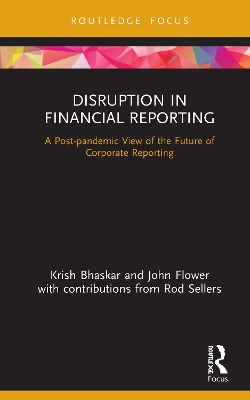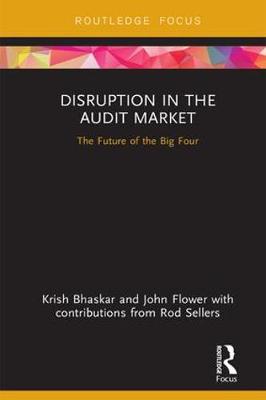Disruptions in Financial Reporting and Auditing
1 primary work • 3 total works
Book 3
Since the global financial crisis of 2007–8, new laws and regulations have been introduced with the aim of improving the transparency in financial reporting. Despite the dramatically increased flow of information to shareholders and the public, this information flow has not always been meaningful or useful. Often it seems that it is not possible to see the wood for the trees. Financial scalds continue, as Wirecard, NMC Health, Patisserie Valerie, going back to Carillion (and many more) demonstrate. Financial and corporate reporting have never been so fraught with difficulties as companies fail to give guidance about the future in an increasingly uncertain world aided and abetted by the COVID-19 pandemic.
This concise book argues that the changes have simply masked an increase in the use of corporate PR, impression management, bullet points, glossy images, and other simulacra which allow poor performance to be masked by misleading information presented in glib boilerplate texts, images, and tables. The tone of the narrative sections in annual reports is often misleading. Drawing on extensive research and interviews with insiders and experts, this book charts what has gone wrong with financial reporting and offers a range of solutions to improve information to both investors and the public. This provides a framework for a new era of forward-looking corporate reporting and guidance based on often conflicting multiple corporate goals. The book also examines and contrasts the latest thinking by the regularity authorities.
Providing a compelling exploration of the industry’s failings and present difficulties, and the impact of future disruption, this timely, thought-provoking book will be of great interest to students, researchers, and professionals as well as policy makers in accounting, financial reporting, corporate reporting, financial statement analysis, and governance.
This concise volume evaluates the cause and significance of recent corporate failures and financial scandals, and how they reflect on the fitness for purpose of the external auditors, financial reports, financial watchdogs, boards, directors and senior management. Failures like the disastrous collapse of Carillion, examined at length, have ultimately led to a crisis of confidence not only in the audit process but in the entire process of financial reporting.
Revealing the shortcomings in audit quality, independence, choice and the growing expectation gap, Financial Failures and Scandals questions if the profession, its regulators or government watchdogs, are adequately prepared for the challenges of increasing regulation, public outcry and political scrutiny in the face of inevitable future financial failures. The fundamental structures of financial reporting, annual reports, boards of directors and senior management are often found to have failed. Tighter regulation and new requirements for reporting will inevitably result.
Drawing on extensive research and interviews with insiders, users and experts, this unique book provides a compelling account of the profoundly disruptive impact of financial failures on corporate and financial accountability. Topical and readable, this book will be of great interest to students, researchers and professionals in accounting and auditing, as well as to policy makers and regulators.
Focussing on the dominance of the Big Four auditing firms - PwC, EY, Deloitte and KPMG - this concise volume provides an authoritative critical assessment of the state and future of the audit market, currently the subject of much debate and the focus of significant government enquiries. Drawing on extensive research and a vast collection of evidence from interviews with insiders, experts and users, it explores the key issues of audit quality, independence, choice and the growing expectation gap.
Just as disruptive technologies are overturning other established sectors, this book explores their impact on accounting, financial reporting and auditing. It questions whether the Big Four-dominated audit market is prepared not only for the inevitable disruption of new technologies, but also the challenges of negative public perceptions, cynicism about regulation and demands for greater transparency.
In the context of increasing high-profile corporate failures, this book provides a compelling scrutiny of the industry's failings and present difficulties, and the impact of future disruption. At this crucial time, it will be of great interest to students, researchers and professionals in accounting and auditing, as well as policy makers and regulators.


